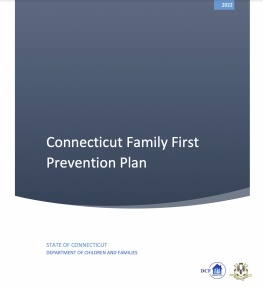
The State of Connecticut's child welfare system values families and believes children are best served safely in their own homes. A strength of the system is a fundamental belief that the wellbeing of children and families is a shared responsibility amongst all members of the community. When a need is identified, families predominantly require local "support" versus government "surveillance." Connecticut practices within an integrated child welfare structure; one which collaborates, sets priorities and supports families remaining together. Connecticut’s Department of Children and Families (CTDCF), sister state agencies, community-based organizations, early childhood, K-12 education, healthcare, law enforcement, judicial/courts, housing, behavioral health, labor and social service systems are all on the same team, working together to achieve optimal outcomes for children, youth, families and communities. Based on these core tenets, Connecticut welcomes the opportunity to leverage the Family First Prevention Services Act1 (Family First) to further its overarching vision for serving our children and families.
On February 9, 2018, Family First was signed into federal law. Family First represents a shift in federal policy as it extends the use of title IV-E funds beyond foster care and adoption assistance to prevention services intended to stabilize families and keep them together. Specific prevention services that are newly eligible for federal reimbursement include evidence-based mental health treatment programs, substance abuse prevention and treatment programs, and in-home parenting skill-based programs rated on the Title IV-E Prevention Services Clearinghouse. CTDCF and the State as a whole are well positioned to implement Family First in part due to the decades-long shift towards prevention and embracing families as partners.